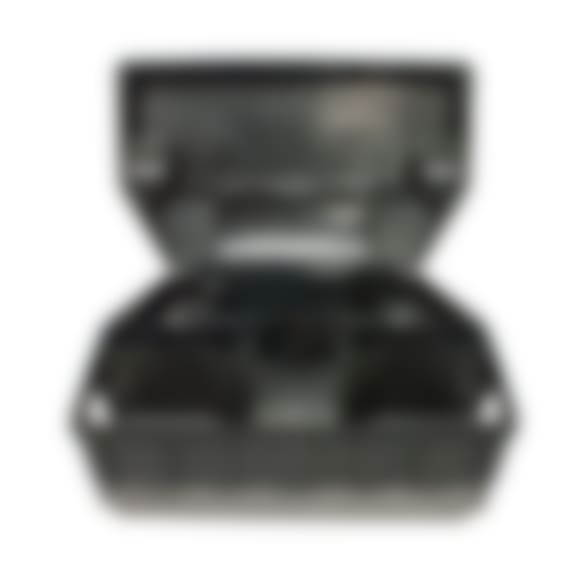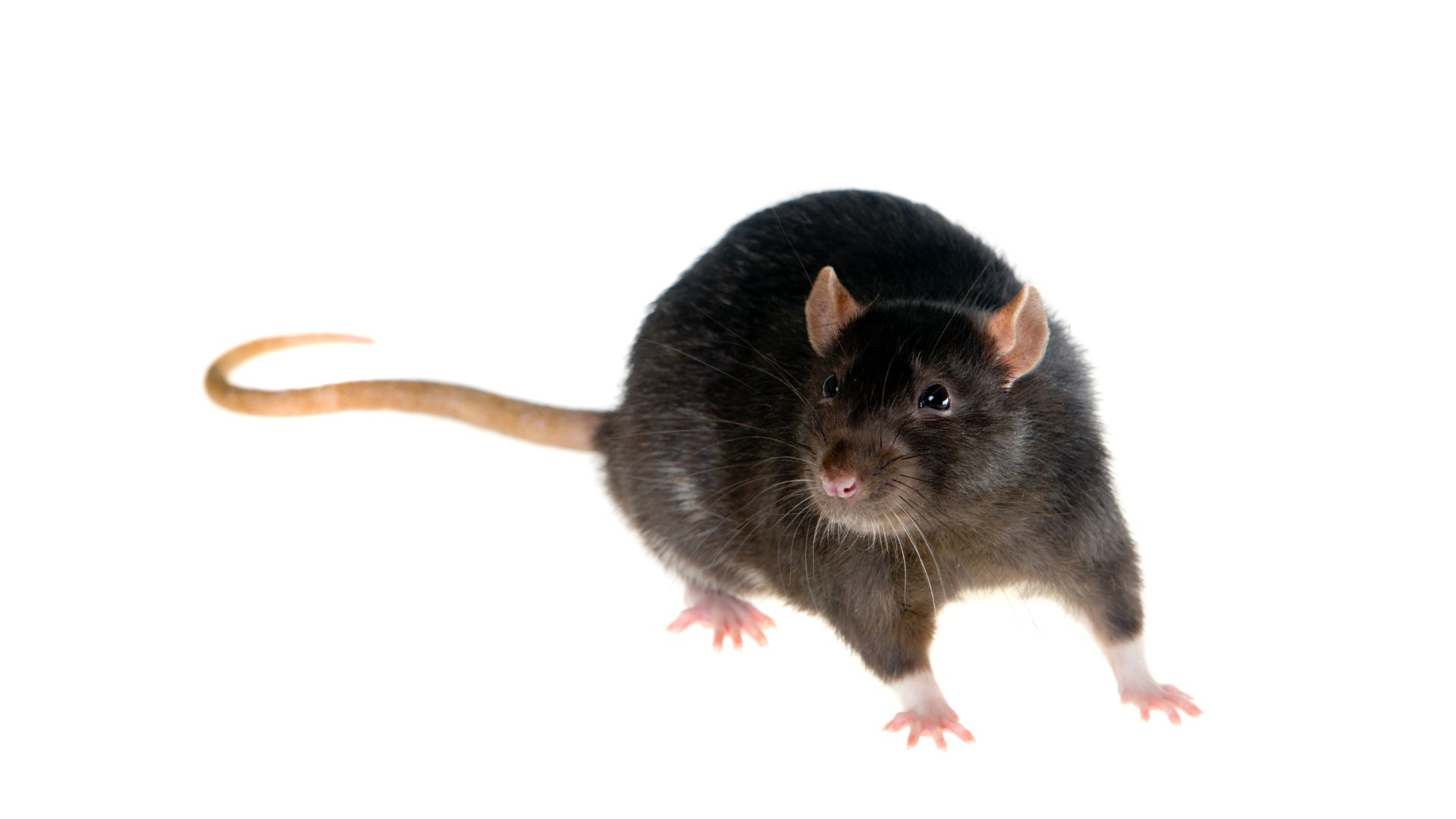
How to Get Rid of Rats
Dealing with a rat infestation can be challenging, but you can effectively control the problem with the proper steps. Identifying signs of rats, implementing preventative measures, and using targeted treatments are key to eliminating them from your home or yard. For a complete guide, we cover everything from rat identification to prevention and the best control methods for your space.
The Different Types of Rats
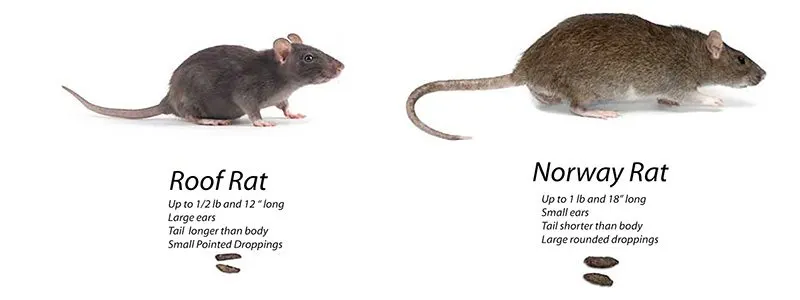
The first step in rat control is identifying the species you are dealing with. The second is a thorough inspection of your home, which will help determine where to place the rat traps and bait. Once you have completed these steps, you have two main treatment options for rats: poisoning them or trapping them.
How to Get Rid of Rats
Sanitation, Inspection, & Exclusion
The first step in rat control is a thorough inspection, followed by proper exclusion and sanitation measures to block entry points. Once the rats' location is identified, you can use traps, bait, or both. Exclusion is essential since rats are more accessible to keep out by sealing openings larger than 1/2 inch. Rats, especially Roof rats, are cautious and may avoid new traps or baits for a day or two. A few particularly wary rats may even avoid them altogether. Adequate sanitation is crucial in preventing infestations.
Trapping
Trapping and using rodent baits are the most effective methods for getting rid of rats. Trapping has advantages over baiting, especially for those who prefer not to use rodenticides or kill rats. It provides immediate results with more minor infestations and ensures dead rats can be easily disposed of before causing odor issues. If handling dead rats is uncomfortable, a local exterminator can assist.
Types of Rat Traps
Trapping is more labor-intensive, but it is the best way to avoid the odor problems associated with rodent baits. Here are the three top traps we recommend for getting rid of a rat infestation in your home.
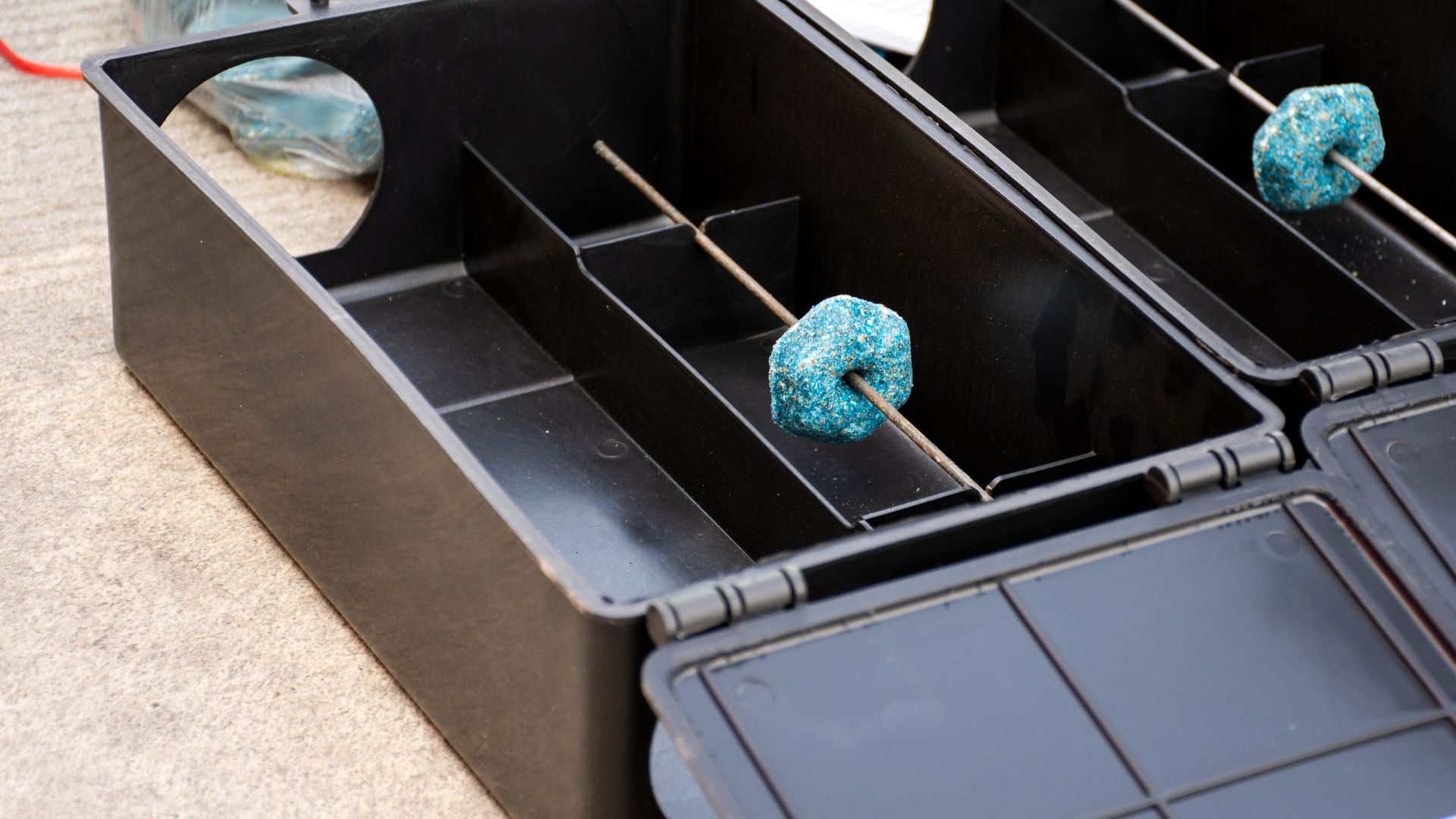
-
Snap Traps: Snap traps remove rats quickly and have been used for a long time since they are cheap and effective at getting rid of a rat infestation. They kill rats instantly.
-
Live Traps: Live traps are a practical alternative to snap traps, including live traps. When you catch a rodent, release it at least a couple of miles from where it was.
-
Glue Traps: When rodents escape other traps, glue traps can be quite successful. They do kill rats, but are sometimes considered inhumane.
Rodent Bait
Rodenticides should only be used in areas inaccessible to children and pets, with tamper-resistant bait stations required by law to prevent accidental poisoning. Single-feed baits, available in pellets, meal, or block forms, are lethal after one feeding. However, disturbing rats' habitats during baiting can cause them to flee. To prevent new infestations, maintain cleanliness, remove food sources, and eliminate hiding spots. While baits are less labor-intensive, they can lead to odor problems and no bait controls, where rats die or eliminate odors.
How to Identify Different Types of Rats
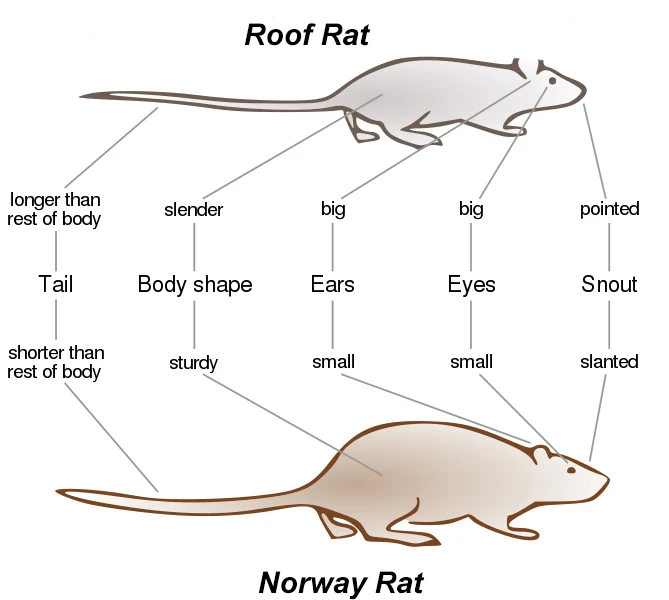
The two most common rat species in the U.S. are Norway rats and Roof rats, each with distinct habits that impact control methods. Norway rats are larger, with coarse brown fur, a blunt nose, and small ears. In contrast, Roof rats are smaller and sleeker, with grayish-black fur, a pointed nose, and long ears. They are excellent climbers, typically nesting in attics, upper stories, or vegetation.
Roof Rats
-
Sleek, agile
-
Belly color: gray, white
-
The fur is grayish-black to solid black
-
Weighs 5-9oz
-
The tail extends to the snout when pulled, fine-scaled and uniformly dark
-
Head is pointed
-
Ears are long enough to reach eyes if folded over.
-
Lives above ground and are good climbers but may expand nests to underground burrows
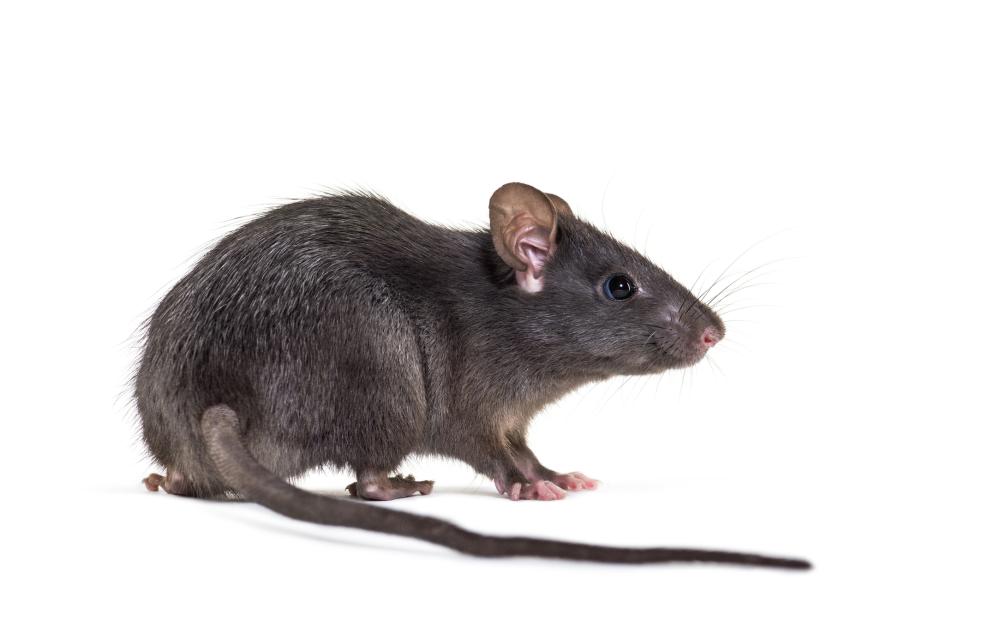
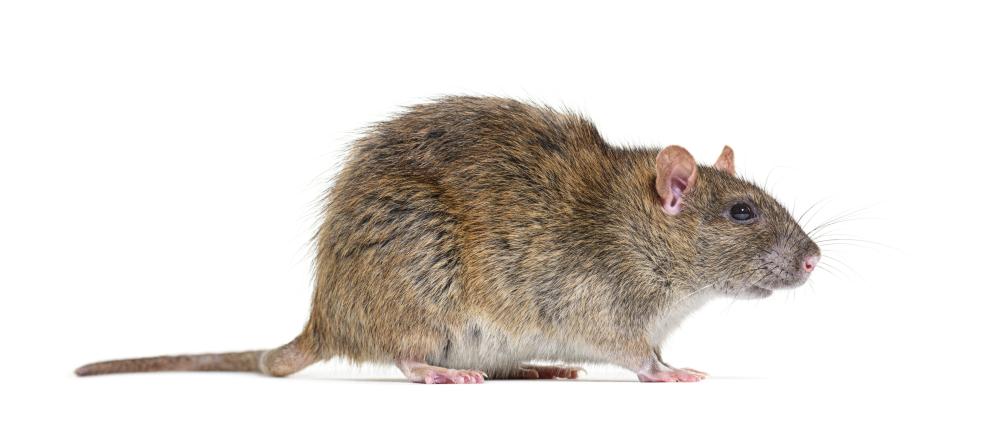
Norway Rats (Sewer rats, brown rats, house rats, wharf rats, water rats, gray rats)
-
Large and robust
-
The belly is mostly gray.
-
Weighs 12-16 oz
-
Body fur is coarse, ranging from reddish to grayish brown
-
Nose is blunt
-
The ears are small and do not reach the eyes when pulled down
-
Lives in colonies, often ground-dwelling (burrows along foundational walls), may nest inside (usually on lower floors).
Common Locations for Roof & Norway Rats
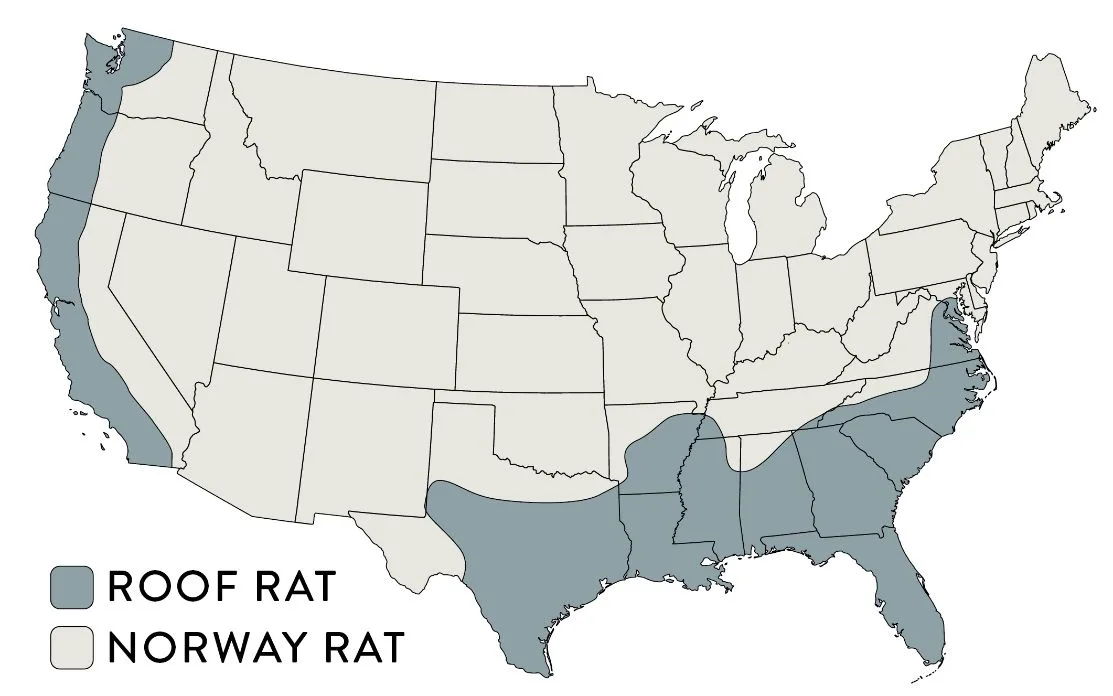
Norway rats live at ground level or in lower building areas, often burrowing near foundations. Roof rats prefer coastal, temperate climates, while Norway rats are more widespread and thrive in cooler regions.
Identifying the species based on their behavior and habitat is crucial for effective control. Inspections reveal where to place traps or baits—higher areas for Roof rats and lower ones for Norway rats. Poison baits and non-toxic traps are available, but geographic location and species-specific behavior will determine the best approach.
How to Know if You Have a Rat Infestation
To successfully get rid of rats, you must know how to detect an infestation in your home:
Strange Odors and Sounds in Your Home
Rats produce a strong ammonia odor, and a rat infestation will have a distinct smell. They're also extremely noisy, squeaking, scratching, and rustling through your house. Either of these signs indicates that rats are present in the structure.
Rat Droppings
As rats walk through your home, they leave droppings behind. Along main rat paths, you may detect small, dark pellet-shaped droppings.
Oil Marks On Your Walls
Rats will move along the walls of your home because they have weak eyesight. They leave oil marks and smudges on the walls as they travel these courses.
Look for Rat Footprints
If you have a rat problem, examine a dusty, seldom-used corner of your house. Rats frequently leave foot and tail prints in the areas they visit. A great test to see if you have a rat infestation is to sprinkle a fine coating of baking soda on the floor and look for fresh rat footprints the following day.
Rat Damage
The final inspection step is to look for rat damage in your home. Rats leave a trail of destruction behind them. They may gnaw on furniture, storage containers, paper, and pet food and devour food left out on the counter. Getting rid of rat infestations is crucial as soon as you notice any of the signs listed above. Ideally, it's a good idea to learn how to get rid of rats before an issue arises.
How to Prevent Rats
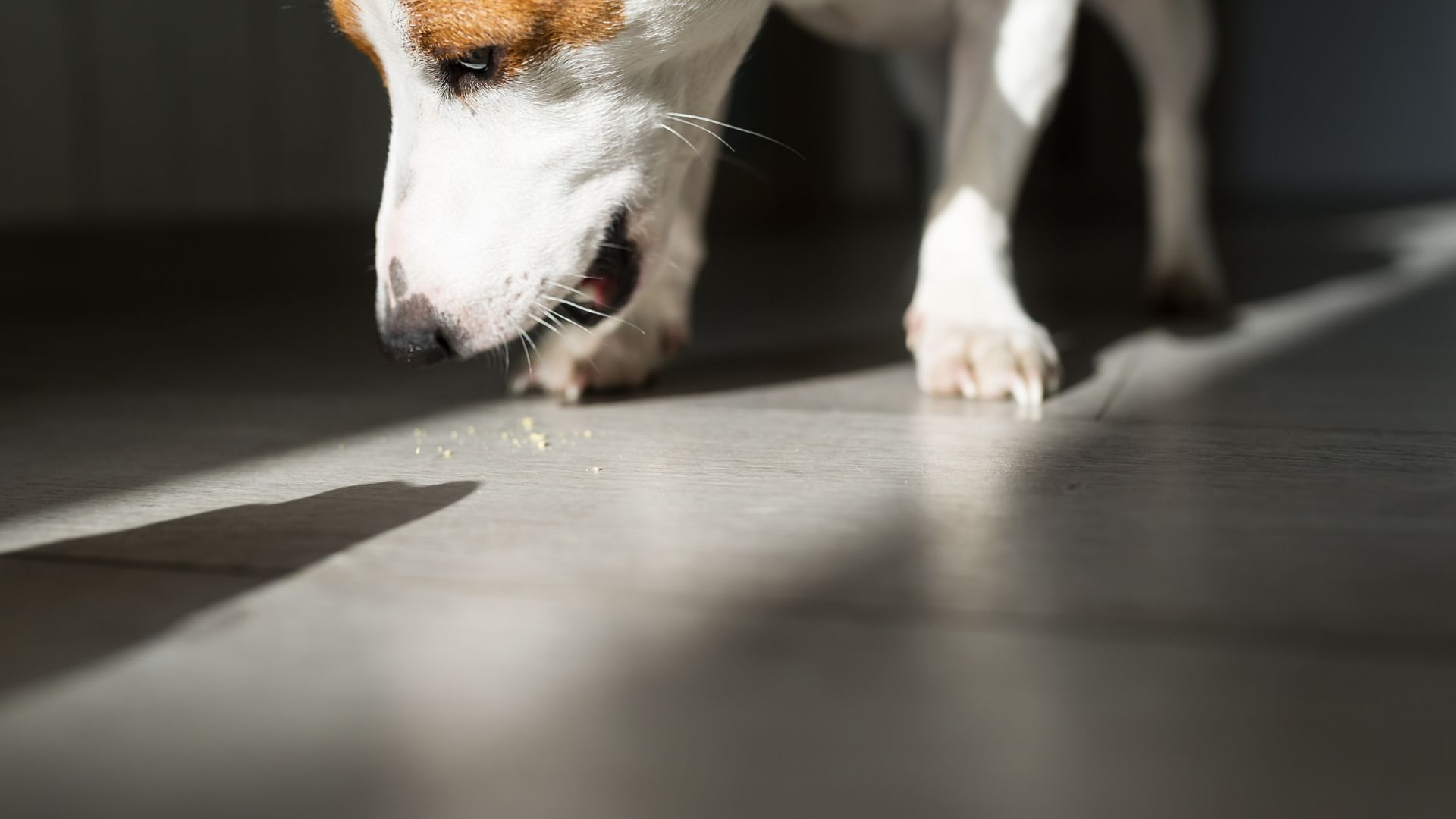
Preventing rats is critical to maintaining a safe and sanitary home. The first step is to address any existing rats quickly, as it's easier to eliminate a few than a large infestation. Traps and poisons are effective but should be handled carefully, and dead rats must be promptly disposed of to avoid attracting more pests. Removing potential food sources by storing food in airtight containers and cleaning up spills immediately is also important. These preventative measures help keep your property free of rats.
Extra Rat Facts
-
Rats are excellent swimmers and can swim up to 1/2 mile in open water and go through sewer lines.
-
Norway rats prefer food with high carbohydrate and protein content, although they eat almost any type of food.
-
Roof rats prefer to eat grains, fruit, sweets, peanut butter, and nut butter but will eat what is available in their environment.
-
They are "picky" eaters, due to their natural suspicion of new items in their environment. Roof rats do not readily accept meat or fish.
-
Rats tend to be cautious with new objects. Since they are cautious of new elements in their environment, it may help to set unset rat traps.
-
Rats cannot survive long without water, while mice may survive longer.
-
Norway rats are not often found indoors, they typically nest outside in burrows. A young Norway rat may be mistaken for a mouse. The young Norway rat has a rounder body than the slender house mouse.
-
Roof rats like habitats in attics and trees. They may enter your home on a power line or a tree. Like mice, the roof rat is an excellent climber. You may be more likely to encounter a serious rat infestation with roof rats.
-
The larger Norway rat is not as agile as the roof rat or mouse. Since roof rats are often found in the upper levels, they may be undetected for a while.
-
A Norway or roof rat will move within a diameter of 98 to 164 ft. If conditions are unstable or there are changes such as new buildings, they may expand the diameter.
-
Roof rats and Norway rats are both opportunistic and will eat almost anything that is available. That is why baits work well during rodent extermination.
Shop Rat Control Solutions at DIY Pest Control
Taking swift action against rats is essential for safeguarding your home and well-being. DIY Pest Control offers a wide range of effective rat control products at DIY Pest Control, including powerful traps, potent rodenticides, and eco-friendly repellents. Our carefully selected solutions ensure you have everything you need to handle any rat infestation, whether large or small. Don't let rats invade your space—visit our store today and equip yourself with the tools necessary to maintain a rat-free environment.
Shop Rat Control Products





